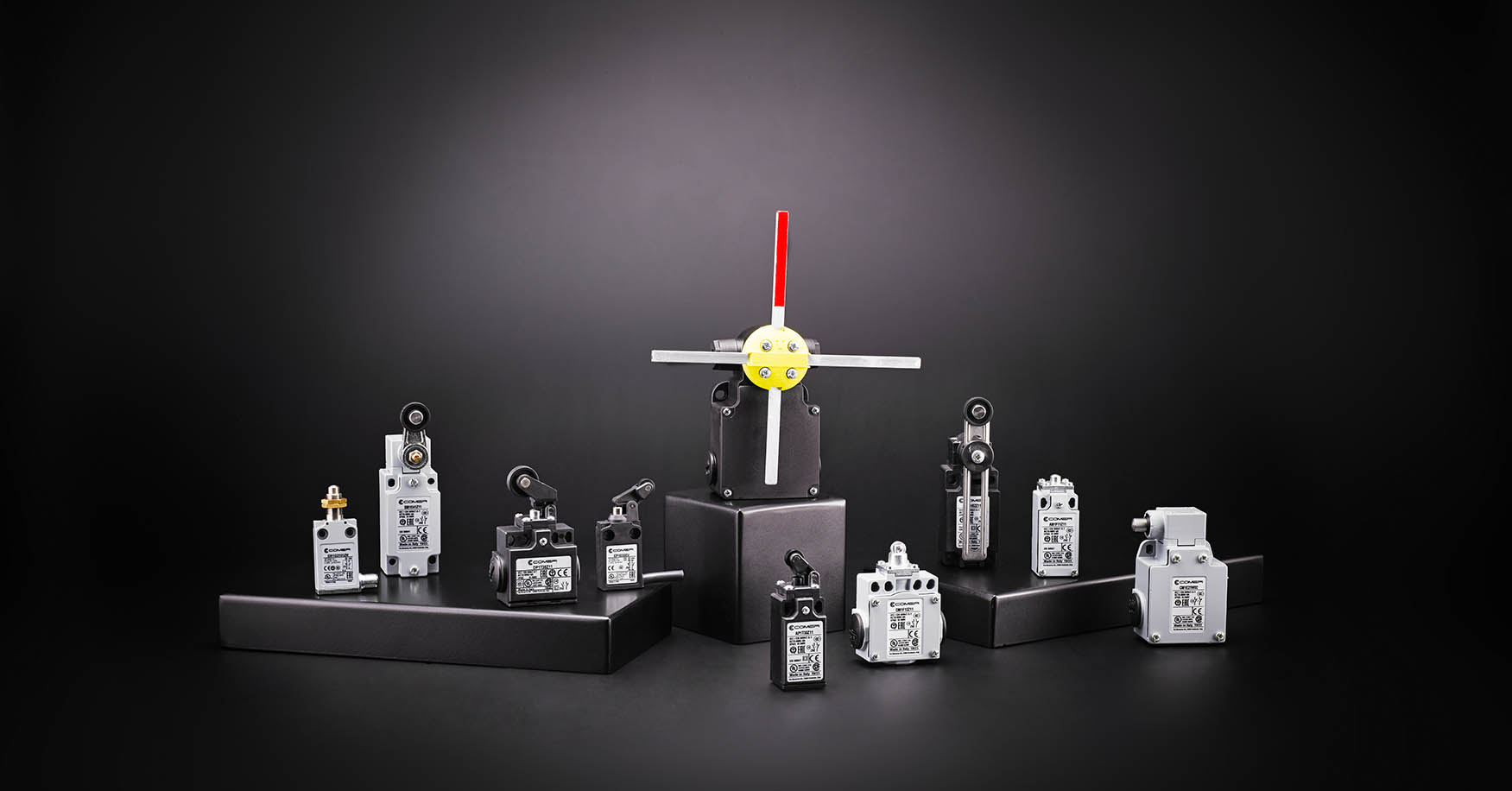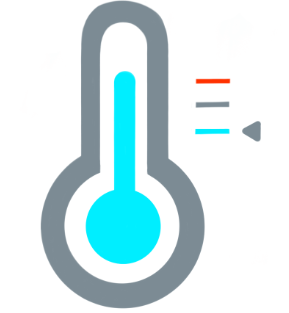Limit switches
Here you can find our portfolio of certified and safe limit switches for your company, which are used in many industrial machines and processes.
Furthermore, you will find information on the types of limit switches, the areas of application and much more on this page.

What is a limit switch?
A limit switch, also called a position switch, an end switch or limit switch, is an electromechanical switching device consisting of an actuator (in this case an actuating head) and a contact block.
Actuating heads for limit switches are among others
- Actuator with end plunger
- Actuator with end roller plunger
- Actuator with roller lever for 1 direction
- Actuator with roller lever
- Actuator with rod lever
- Actuator with multidirectional spring
- Pull action with ring

Representation of different actuating heads from our product catalogue.
Actuator: An actuator is a technical component that converts electrical signals into mechanical motion or other physical quantities such as temperature or pressure.
How does a limit switch work?
When an object (for example a moving object in a machine or an elevator) comes into contact with the actuator, an electrical connection is either established or interrupted. The limit switch uses these contacts to detect the position of the object and can thus generate and transmit a signal (for example, to establish an electrical connection).
Easy to operate electromechanical limit switches offer particular advantages:
- Visibility during operation.
- Can switch high currents (conventional thermal current 10 A).
- Galvanically isolated contacts.
- Precise intervention points.
- Immunity to electromagnetic interference
What types of limit switches are available?
One of the limit switches is the roller lever switch. Here the actuating head is fitted with a roller. When contact is made with this roller, for example by a machine part, a camshaft rotates in the roller lever switch, which actuates the contacts.
The limit switches also include the proximity switch, also called proximity switch or proximity initiator. As the name suggests, these switches react to proximity, i.e. without direct contact. In everyday use, the proximity switch, or proximity sensor, is responsible for switching off the screen when a call is made and the smartphone is held to the ear.
Light barriers are also among the limit switches. These detect a certain position, such as a person or an object between two elevator doors, and only then give the signal that the door can close automatically when there is nothing left between the doors.
What does a limit switch have to do with a traffic light?
An example of how a limit switch can detect when a certain position has been reached, is known from the gate of an underground car park. This is connected to a traffic light that signals either "stop" or "drive" (red or green). In order for this signal to be generated, a limit switch must recognise the position of the gate and communicate it. For example, if the gate is fully raised, the traffic light can switch to green and the electric drive that causes the door to "raise" is also switched off.

For particularly cool temperatures: Low temperature limit switches
Low temperature limit switches can be found in many cold stores or in systems with very low temperatures. These devices use special materials that extend the range of application to -40°C while maintaining the mechanical performance of the switch.

Limit switches can also be found in airplanes and elevators
In aircrafts, limit switches are used for communication between cockpit and landing gear. Here the switch detects when a landing gear is completely extended or retracted and signals this to the cockpit.
In addition to non-contact sensors, such as light barriers, roller lever switches are often used in elevators to detect the exact position of an elevator and signal to the passenger which floor he or she is on. The switch "clicks" briefly at each floor and counts how many floors the elevator has just traveled to.

Find the right limit switch in our product portfolio
Limit switches are used in many industrial machines and processes. Our portfolio includes limit switches in a wide range of components, contact blocks, actuators and functions. Depending on the type of application, we offer the switches with metal or plastic housing, pre-wired or with a device for cabling and in the sizes 30, 40, 50 and 60mm.
In addition, the limit switches have different certifications and thus meet international safety and production regulations. All our limit switches meet the highest quality requirements, are reliable in the long term and have a high degree of specialization.
Get in touch with us today!


